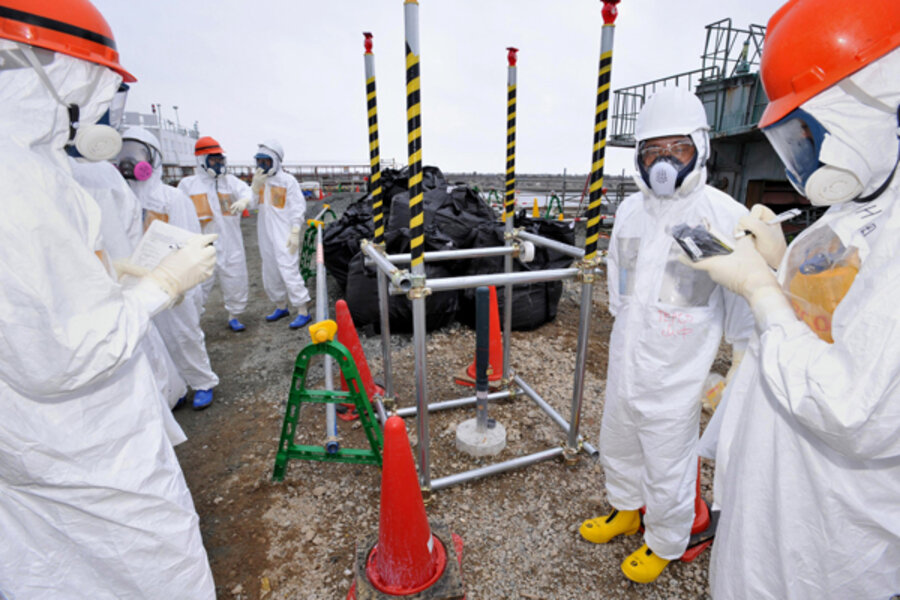Fukushima nuclear emergency stands, 2 years after quake
Loading...
• A summary of global news reports.
After alarming reports last month revealed that hundreds of tons of contaminated water were being released into the ocean every day, more problems have arisen at Japan’s Fukushima Daiichi nuclear power plant.
Ten workers at the disaster-ridden plant were exposed to radioactive material after being sprayed by contaminated mist. How the mist, which is used to cool some of the building, became contaminated is still a mystery.
Tokyo Electric Power Compnay (TEPCO), the company that operates Fukushima, announced that it believed the misting system was contaminated after detecting traces of radioactive material on some of its workers Monday, reports The Wall Street Journal.
The contamination was detected on Monday, after an alarm from a radiation monitor in front of the command center went off. Routine scans of workers after they finished their shifts at the plant Monday also found some traces of radioactive contamination – the largest amount was 19 becquerels per square centimeter – on the surface of the hands and faces of 10 people, the Nuclear Regulation Authority said.
That amount of contamination is five times the maximum level Tepco has set as its limit, but none of the workers appear to have inhaled radioactive particles, or reported any illness, the NRA said.
Though the level of radioactive exposure is low enough so as not to cause grave concern, TEPCO still has not been able to identify the source of the water’s contamination.
This is only the latest in a string of debacles that has plagued the Fukushima plant and TEPCO since March 2011, when an earthquake and subsequent tsunami caused system shutdowns at the plant, resulting in a nuclear meltdown. The radioactive materials released by the meltdown forced the evacuation of the surrounding area in the worst nuclear disaster since Chernobyl. Since then, the Fukushima site has remained unstable.
Last month, it was made public that ground water, contaminated by the reactors, had breached its barrier and was spilling into the ocean, according to Reuters. TEPCO had denied that the contaminated water was flowing into the sea, but after reports of spiraling levels of radioactive materials in the ocean, the company finally came clean.
The Guardian reports that 300 tons of radioactive water spills into the ocean every day, and that the leaks probably began soon after the disaster in 2011.
According to The Japan News, the water leakage has prompted Prime Minister Shinzo Abe to have the government take a much more active role in the clean up and maintenance of the Fukushima site, rather than leaving it to TEPCO.
In the mean time, the environmental fallout has already taken its toll on fishing communities, whose livelihoods are at risk of being destroyed by the heavy amounts of contamination at sea, according to The Guardian.
"It's like there's an allergy to the name Fukushima," said Takashi Niitsuma, head of sales at the Iwaki fisheries co-operative….
"Even if we could catch fish for sale, no one would buy them. We're talking about the Pacific Ocean, so it's not just Fukushima that's affected by the contamination. If Tepco allows more water to leak into the sea, the criticism will be worldwide. For us as fishermen, it's not a question of whether we can revive the Fukushima brand – we have no choice. We have to at least try."







